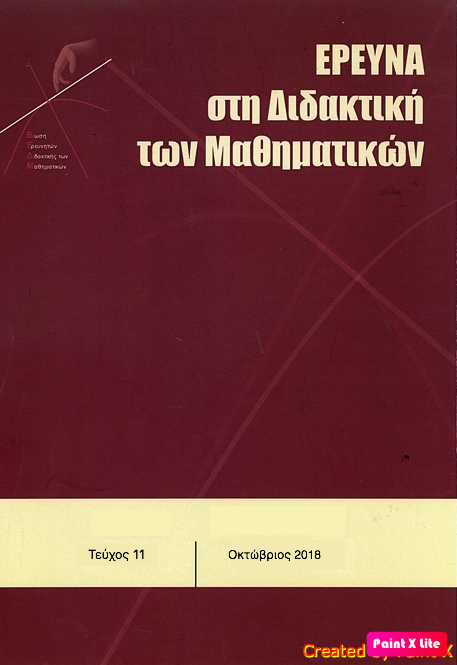AN INTERVENTION PROGRAM ON THE DEVELOPMENT OF MENTAL ROTATION ABILITY IN STEREOMETRY TASKS

Abstract
The present study investigated the influence of gender, field dependence and an intervention program on the development of the mental rotation ability. The study was conducted with 9th grade students and it aimed to improve their performance in stereometry tasks requiring rotation. Results indicated a statistically significant increase in the performance of the experimental group, while there were no gender differences with respect to their performance in stereometry before as well as after the intervention. Both mental rotation and field dependence appeared to be predictors of performance in stereometry. The mental rotation as an important cognitive function is interrelated with the performance in stereometry and the results of the present study are discussed in relation to the educational settings.
Article Details
- How to Cite
-
Ευσταθίου (Marinos Efstathiou) Μ., & Παναούρα (Rita Panaoura) Ρ. (2018). AN INTERVENTION PROGRAM ON THE DEVELOPMENT OF MENTAL ROTATION ABILITY IN STEREOMETRY TASKS. Research in Mathematics Education, (11), 53–70. https://doi.org/10.12681/enedim.18939
- Section
- Articles

This work is licensed under a Creative Commons Attribution 4.0 International License.
Authors who publish with this journal agree to the following terms:
Authors retain copyright and grant the journal right of first publication with the work simultaneously licensed under a Creative Commons Attribution licence that allows others to share the work with an acknowledgement of the work's authorship and initial publication in this journal.
Authors are able to enter into separate, additional contractual arrangements for the non-exclusive distribution of the journal's published version of the work (e.g. post it to an institutional repository or publish it in a book), with an acknowledgement of its initial publication in this journal.
Authors are permitted and encouraged to post their work online (preferably in institutional repositories or on their website) prior to and during the submission process, as it can lead to productive exchanges, as well as earlier and greater citation of published work (See The Effect of Open Access).


